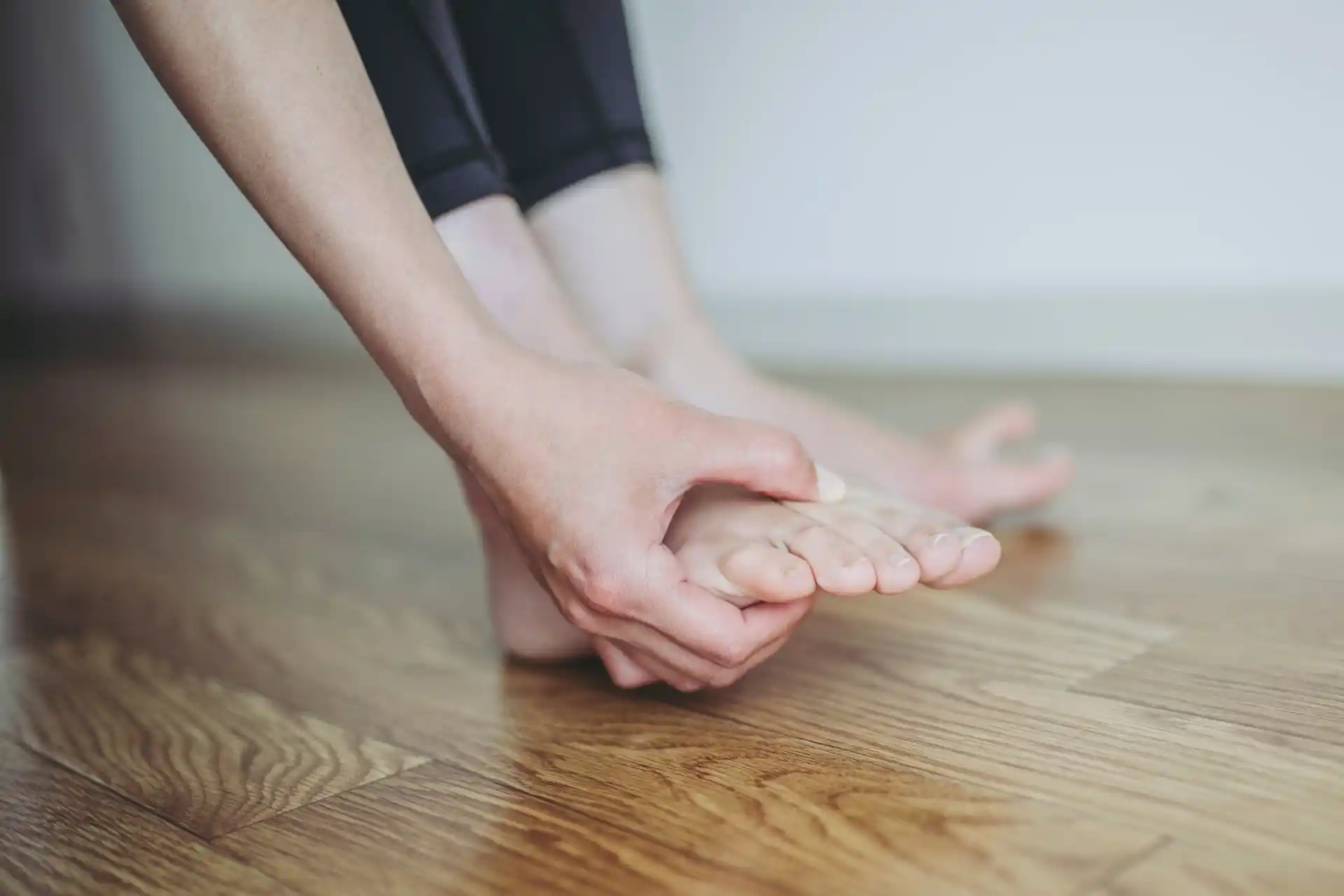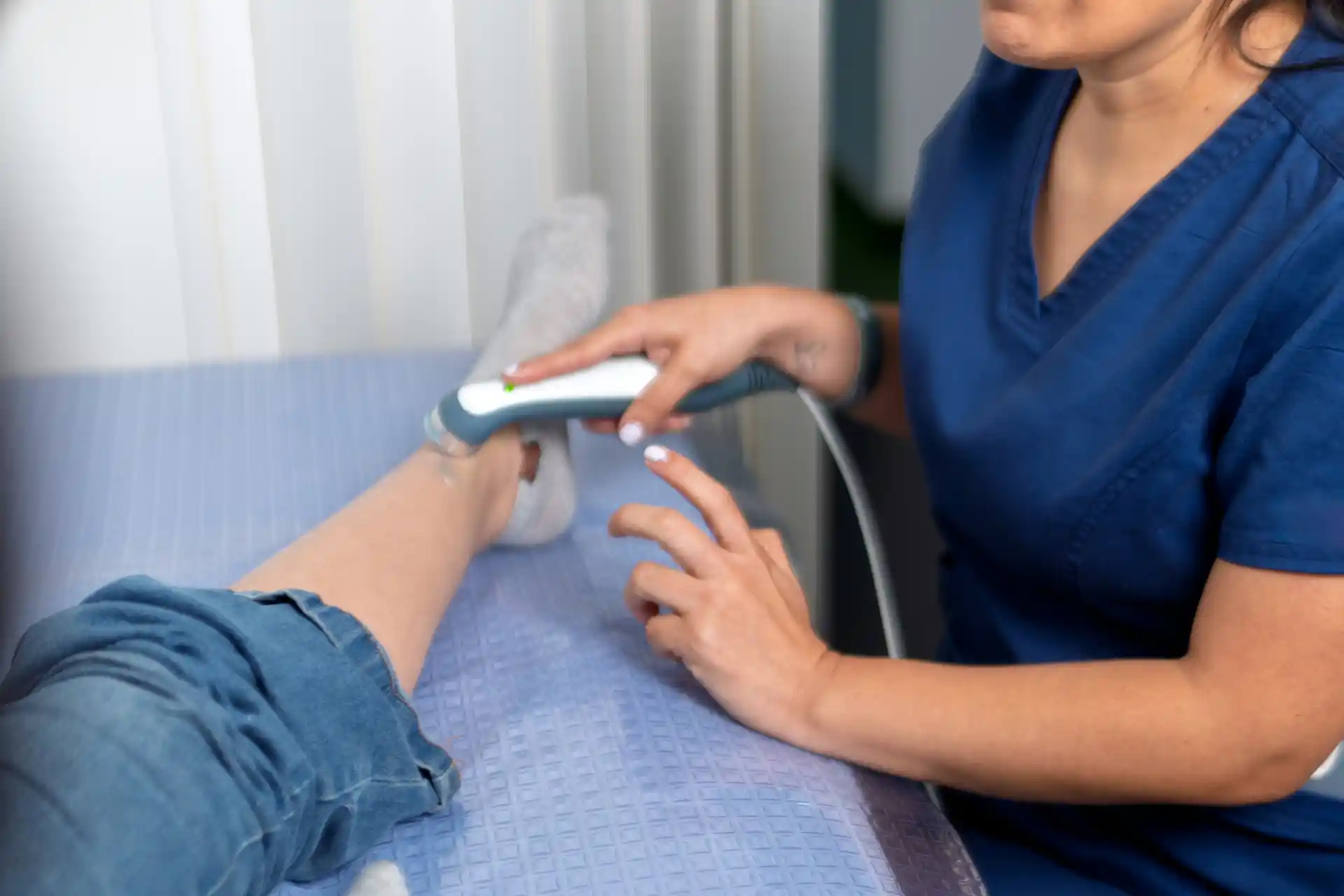If you’ve ever noticed persistent tingling or numbness in your hands or feet, a nerve conduction study could offer the clarity you need.
This test measures the speed and strength of electrical signals traveling through your nerves, providing valuable insights into how well they’re functioning.
Healthy nerves can transmit signals at speeds of up to 120 miles per hour, meaning any slowdown might point to an underlying issue that deserves your attention.
Let’s explore what makes nerve conduction studies so useful, especially for diagnosing and managing peripheral neuropathy.
Why This Test Matters
A nerve conduction study helps healthcare providers identify or rule out conditions such as peripheral neuropathy, nerve compression syndromes, and other nerve-related disorders.
If you have ongoing issues like muscle weakness, sharp pain, or unexplained numbness, your medical team might recommend this test to pinpoint the cause.
Quick And Informative
By tracking how fast and effectively your nerves transmit signals, the study can zero in on specific sites of damage or slow conduction.
In many cases, the results can be ready within 24 to 48 hours (Cleveland Clinic). That means you will know fairly quickly if you need further tests or a particular treatment plan.
Broad Diagnostic Reach
This study is often done alongside electromyography (EMG) to distinguish nerve-related problems from muscle disorders.
While a nerve conduction study measures signal speed and strength, EMG looks at muscle response. Together, they offer a wide snapshot of your neuromuscular health.
That matters a great deal if you’re exploring conditions like peripheral neuropathy or diabetic neuropathy, where the line between nerve and muscle symptoms can get blurry.
Low Risk, High Value
Electrical shocks used to stimulate your nerves are typically mild, making the procedure far less intimidating than it might sound (Mayo Clinic). Significant side effects are rare, and any discomfort is usually short-lived.
Treating Complex Conditions
Complex conditions, from Charcot-Marie-Tooth disease to CRPS, also benefit from the insights of a nerve conduction test. Early intervention can be guided by the test results, helping you maintain mobility and daily comfort.
Nerve conduction studies are part of a diagnostic suite that pinpoints the site and severity of nerve damage, especially in cases like Guillain-Barré syndrome, herniated discs, or even borderline conditions that don’t present obvious symptoms (Johns Hopkins Medicine).
To learn more about other conditions can be triggered by nerve dysfunction, read up on pinched neck nerve, carpal tunnel syndrome, and sciatic nerve pain.
Monitoring Disease Progression
Beyond diagnosis, nerve conduction studies also help track how your condition changes over time. If your nerve conduction speeds continue to slow, your healthcare team will know it’s time to adjust your management plan.
Conversely, if the test shows improvement, you’ll have reassuring evidence that your therapy is working.
How It Works
To understand why a nerve conduction study is so handy, it helps to see what actually happens during the test. It’s relatively straightforward:
- Electrode Placement
Small, sticky electrodes go on your skin along the path of the nerve being tested. These surface electrodes pick up the electrical signals, so the healthcare provider can see how well your nerve is working. Each electrode is carefully placed where nerve communication is most likely to occur. - Mild Electrical Stimulation
A gentle electrical impulse is sent from one electrode to another. This tiny shock stimulates your nerve, helping the technology measure how fast the resulting signal travels. For many people, the sensation feels a bit like a static shock, and it’s over in a flash. - Data Collection
The monitoring equipment logs how long it takes for the nerve impulse to reach the next electrode. If signals travel more slowly than expected or appear weaker, you may have a nerve dysfunction. Depending on how many nerves need to be tested, the procedure can take anywhere from 15 minutes to an hour or more (Cleveland Clinic).
What The Results Show
Your test results reveal whether your nerves are transmitting signals at healthy speeds and strengths.
A delayed or weakened signal could suggest conditions like nerve entrapment, carpal tunnel syndrome, or peripheral neuropathy.
Occasionally, your results can be normal even if nerves are still affected, especially if you have very small or unmyelinated nerve fibers.
This is why doctors blend nerve conduction data with your exam, symptoms, and sometimes imaging tests for a full picture.
Preparing For The Test
The preparation is simple, but following these steps helps ensure accurate results.
- Stay warm: Cold skin can slow conduction artificially. Dress warmly and ask for a warmer test room if needed.
- Skip lotions or oils: Creams and oils interfere with electrode contact. Avoid applying them to your arms and legs on the day of the test.
- Tell your care team about devices or medications: Pacemakers, stimulators, or blood thinners may require small adjustments during the test.
- Wear loose clothing: Short sleeves or loose pants make it easier for electrodes to be placed without hassle.
These small steps help the test run smoothly and improve the accuracy of your results.
Risks, Precautions, And Aftercare
Any medical test can have risks, but a nerve conduction study generally has a minimal risk profile:
- Mild Discomfort
You may feel a quick sting from the electrical pulses. Luckily, these sensations fade fast. Some people notice slight muscle fatigue if an EMG is done. Good news, that fatigue usually subsides within a day or two. - Rare Side Effects
In unusual cases, there can be minor bruising at an electrode site or mild swelling, which typically resolves on its own. Soft tissue infections or more serious complications are extremely rare (fewer than 1 in 10,000) when a needle electrode is involved (NLM). - Who Should Be Extra Cautious?
If you have a bleeding disorder or a very low platelet count, mention it to your provider. Many individuals with clotting challenges can still safely undergo the test, but it’s important for your medical team to plan properly, especially if an EMG is combined with your nerve conduction study. - Aftercare
Keep the tested area clean and uncovered if it’s sweaty or irritated. If you had needle EMG in your muscles, you might notice minimal soreness for a couple of days. Applying a warm compress and gently stretching can help you feel comfortable more quickly.
Key Takeaways
A nerve conduction study gives you answers that are hard to get any other way. Here’s why it’s worth considering:
- Quick clarity: Results often come within 1–2 days, helping you act fast on treatment.
- Broad reach: Identifies nerve entrapment, diabetic neuropathy, inflammatory conditions, and more.
- Low risk: Minimal discomfort, very rare complications, and no recovery downtime.
- Actionable insight: Guides medication, physical therapy, or advanced interventions based on hard data.
If you’ve been dealing with persistent tingling in hands and feet, chronic numbness, or nerve pain that refuses to go away, this test can open the door to accurate diagnosis and meaningful relief strategies.
Talk to your healthcare provider about scheduling a nerve conduction study, then use the results to shape a plan that works for you.
Seek RELIEF®
RELIEF® is a science-backed treatment that targets dysfunctional fascia, which may contribute to nerve irritation and peripheral neuropathy.
Using a gentle technique called hydrodissection, RELIEF® releases adhered fascia and soft tissue that can press on nerves—helping reduce tingling, burning, numbness, and pain associated with nerve pain and other peripheral neuropathy conditions.1-7
RELIEF® is a minimally invasive alternative to traditional treatments and does not require steroids, long-term medication, surgery, anesthesia, or post-procedure immobilization.
If you’re in the Miami area and seeking relief from peripheral neuropathy, contact us today to schedule a consultation.


.jpg)



.svg)